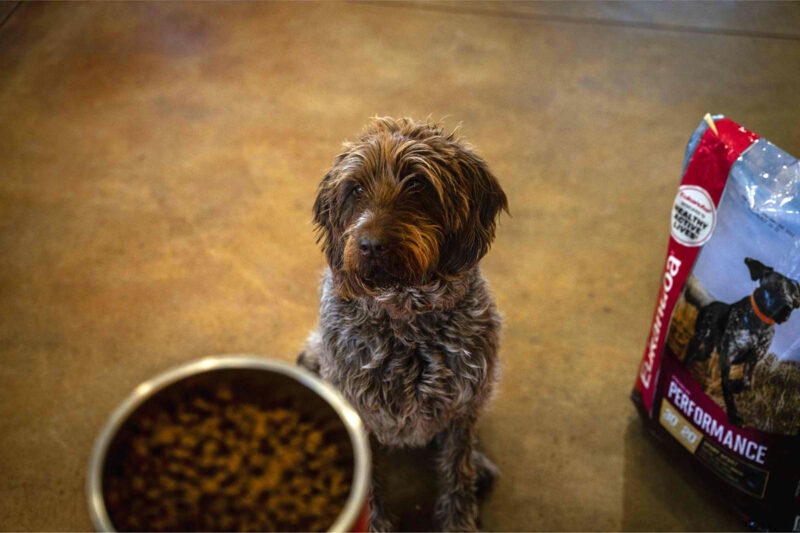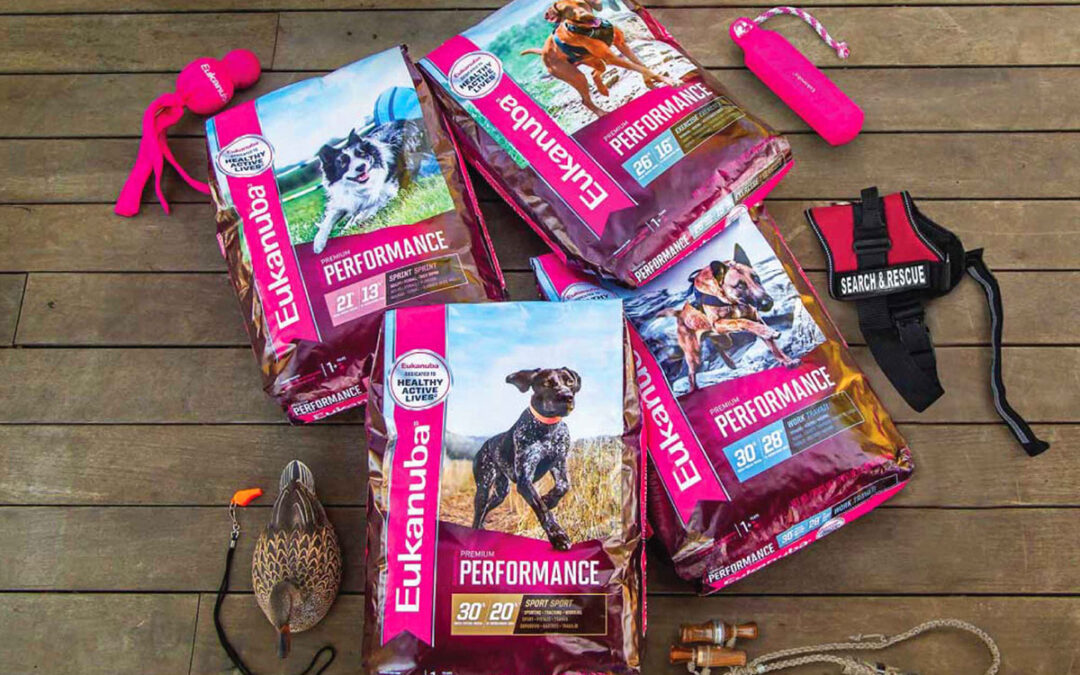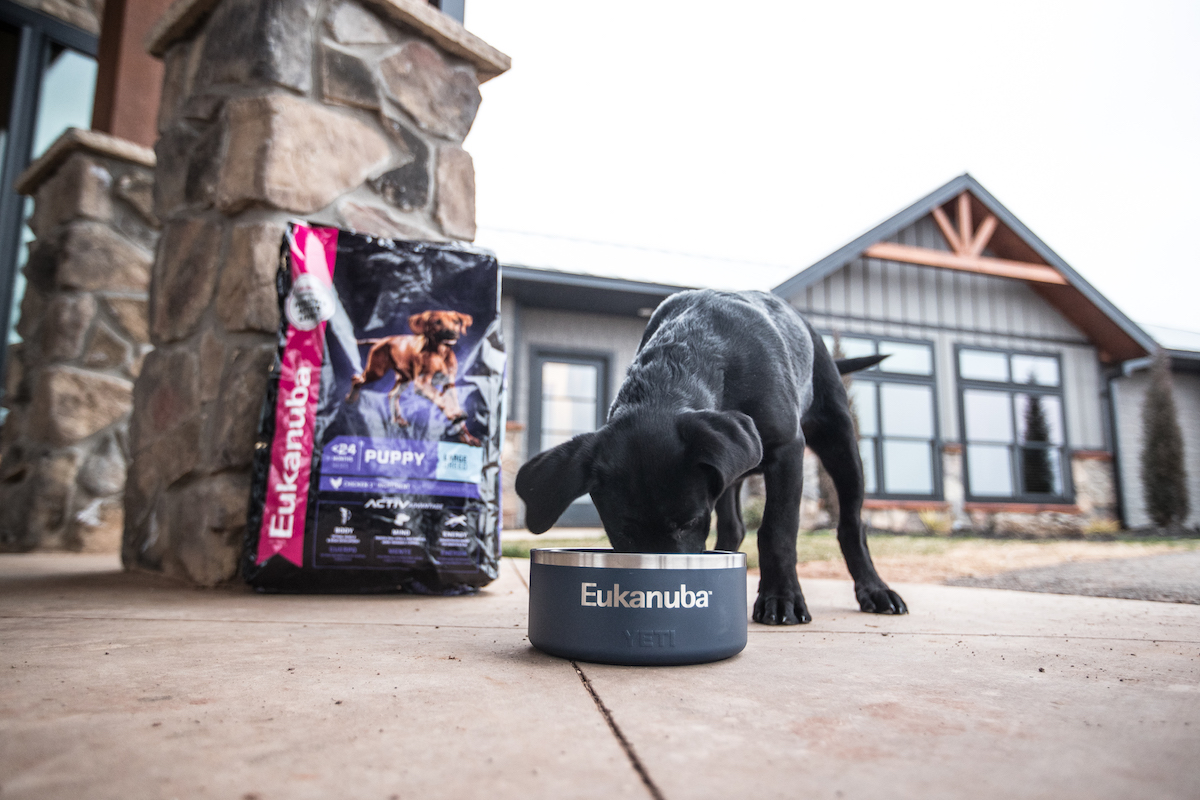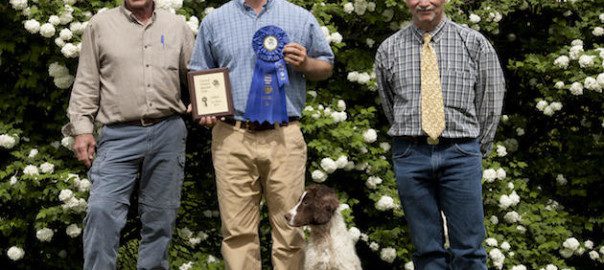What to Feed Your Sporting Dog When Hunting Season Ends
SPONSORED CONTENT: Sporting dogs burn a lot of calories during the hunting season. To support their elevated nutritional needs, savvy handlers feed them performance kibble. Off-season nutritional needs are often different, and that’s why many handlers shift a dog’s diet to one with lower amounts of fat and calories.
Russ Kelley, the Scientific Services Nutritionist at Eukanuba’s Pet Health and Nutrition Center, shares some thoughts on transitioning your sporting dog to an off-season diet.
NOT ALL DOGS SHOULD SWITCH DIETS
“Take an annual view of your dog’s average activity levels to determine if a change in diet should be considered,” Kelley said. “Dogs that compete in field trials and hunt tests run just as hard as they do during the hunting season. Their energy needs are the same so changing diets isn’t necessary. But if your dog goes from a highly active hunting season to a low-key off season you might want to consider a shift.”
WHEN A CHANGE IN DIET MIGHT BE NECESSARY
 “Performance dog foods are scientifically engineered to provide hardworking dogs with the advanced nutrition they need to support peak performance. Many of these diets have higher levels of fat for sustained energy during long runs and protein to support all body systems while also building strong muscles.
“Performance dog foods are scientifically engineered to provide hardworking dogs with the advanced nutrition they need to support peak performance. Many of these diets have higher levels of fat for sustained energy during long runs and protein to support all body systems while also building strong muscles.
“If a dog’s activity level is dramatically reduced, those higher levels of fat and protein aren’t always necessary. Due to reduced work levels, a dog’s body may convert the extra calories into stored fat which can contribute to an overweight condition. All body systems like the skeletal, muscular, cardiovascular, and respiratory systems, have to work harder in an overweight dog. Additionally, a dog’s extra weight means a handler may need to increase conditioning time before beginning preseason training.
“Closely monitor your dog’s body condition score during the off season to determine if a change in diet is necessary.”
WHEN LESS IS MORE
“If your dog works less after hunting season ends then the amount you feed him should shift, too. To determine how much to feed your dog in the off season, evaluate his body condition score, establish his daily caloric needs, and review his current activity level. For help with these calculations, check out Eukanuba’s article on how to feed your dog. Consult your vet if you have additional questions about your dog’s energy needs.”
WHAT TO LOOK FOR IN AN OFF-SEASON DIET
“Eukanuba’s Premium Performance line offers nutrition tailored to the varying activity levels of canine athletes. One shift I see in the sporting world comes from handlers changing from the Eukanuba 30/20 Sport diet during hunting season to the 26/16 Exercise diet in the less active off season. The reduction in fat and calories helps keep a dog’s off-season body condition in check.

“Changing dog foods isn’t hard, but it is a gradual process that should take place over 7 days. The Eukanuba Premium Performance line is based on a nutritional chassis. The same core ingredients are used in each diet within the range. The biggest difference in the formulas is the variations in protein, fat and carbohydrates. Those variations are designed to match up with a dog’s levels of activity.
“Maintaining your dog’s ideal weight year-round is important. If his activity levels significantly change seasonally then consider a change in diet, too.”




